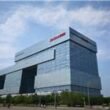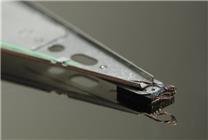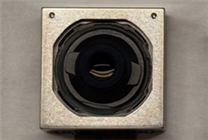Rising HDD Prices and Market Dynamics Shaped by AI Demand
Key Takeaways:
- The recent surge in HDD prices is closely linked to the growing demand from AI data centers.
- Major HDD manufacturers like Seagate and Western Digital have seen substantial increases in stock prices, reflecting booming market conditions.
- Despite high demand, manufacturers are opting not to increase production capacity, focusing instead on technological advancements in hard drives.
In recent weeks, reports have highlighted a significant increase in the prices of various accessories in the PC industry, particularly affecting HDDs (hard disk drives), SSDs (solid-state drives), and memory products. The notable rise in HDD prices is largely attributed to the escalating demand from artificial intelligence (AI) applications, especially in data centers that require large-capacity storage solutions.
The Role of AI in HDD Demand
As AI technologies become increasingly prevalent, the need for substantial data processing and storage capabilities has become critical. Data centers are now expected to manage and analyze vast amounts of information, which in turn has intensified the demand for HDDs. Despite the advancement of SSDs, HDDs remain a crucial component for cost-effective and high-capacity storage solutions.
Industry leaders, such as Seagate and Western Digital, are witnessing remarkable performance in their business operations. Their stock values have surged by over 200% since the beginning of the year—a clear indication of the market’s robust conditions driven by heightened demand.
Seagate’s Strategic Shift
Dave Mosley, the CEO of Seagate, has reported that the company’s ultra-large-capacity hard drives targeted at the cloud market are sold out through 2026, and their production capacity for 2027 is already well-defined. This suggests a booming market, but manufacturers find themselves in a predicament. While demand escalates, they are not planning to increase their production capacity.
In an interview, Mosley stated that the focus for Seagate is on advancing the density of their hard drives rather than expanding production facilities. They are pioneering new hard drive technologies, such as Heat-Assisted Magnetic Recording (HAMR), which significantly enhances storage capacities. This shift in focus allows the company to innovate product offerings without the need for capital-intensive investments in production infrastructure.
Market Implications
The decision by major manufacturers to maintain current production levels, despite the rising prices and the potential for higher profit margins, raises questions about the long-term stability of the HDD market. By prioritizing product upgrades and technological advancements, manufacturers are seeking to transform the market dynamics while capitalizing on the existing demand.
This strategy has its pros and cons. On one hand, by not rushing to inflate production capacities, companies can maintain high profit margins. On the other hand, persistent shortages could lead to price volatility in the future, affecting not only data centers but also consumers in the PC market.
Conclusion
The current landscape of the HDD market reflects a complex interplay between rising demand fueled by AI advancements and a cautious approach from manufacturers toward production capacity. As technology progresses and the demand for storage continues to escalate, the industry must navigate these challenges while striving for innovation.
In summary, the intersection of emerging technologies and market strategies is shaping the future of HDDs. With the landscape continuously evolving, stakeholders must remain vigilant and proactive in responding to shifts in demand while ensuring sustainable growth in this vital sector of the technology industry.









